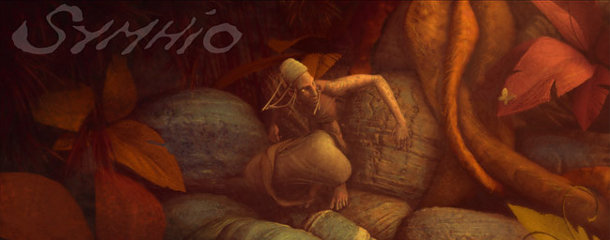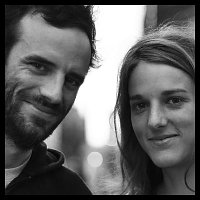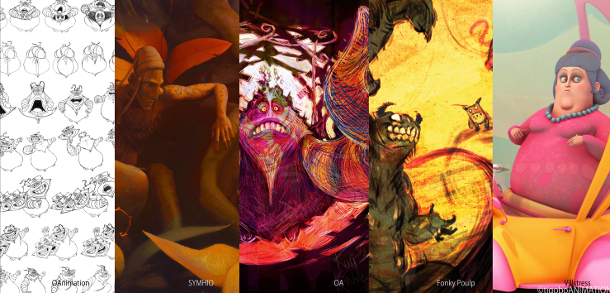Q&A: tigoboANIMATION

 The multi-talented Flavie Darchen and Reno Armanet are co-founders of tigoboANIMATION. The studio produces features, short films, TV shows and documentaries, both their own and in partnership with other artists that share the same independent spirit and passion for animation.
The multi-talented Flavie Darchen and Reno Armanet are co-founders of tigoboANIMATION. The studio produces features, short films, TV shows and documentaries, both their own and in partnership with other artists that share the same independent spirit and passion for animation.
This month, the duo will be spending time over in Los Angeles to teach Animation from 2D to 3D: The French Touch, a four-day course at the Gnomon School of Visual Effects that takes place over the weekends of 17-18 November and 8-9 December. We caught up with Flavie and Reno to find out how the course attempts to distil the best of world animation, the importance of finding your personal style, and to discuss some of their own favourite animations.
CG Channel: Not all of our readers will be familiar with tigoboANIMATION. Tell us about the studio.
Flavie and Reno: We created tigoboANIMATION about ten years ago, in order to be 100% free to work on independent projects, and to work with a team of passionate artists located around the world.
Through tigoboANIMATION, we produce short films, TV series and feature films. Reno is also a composer and sound designer so we can go through the entire production process in house.
Right now, Reno has just finished a short animated film called OA (an award winner at the Cannes Festival), a Stephane Chung short film called Fonky Poulp and one by Sylvain Deboissy called ‘Like a sunday afternoon’. Reno is also developing several series for French TV, and working on several feature films, including SYMHIO.
CGC: What prompted you to launch your own animation school?
FD & RA: Reno decided to create tigoboSCHOOL after having been an instructor or guest lecturer at schools like Gobelins, EMCA and CalArts, and the Annecy International Animated Film Festival. The goal is to ‘release the art’: to develop the students’ personal styles.
Classes take place both online and on-site, either in Los Angeles or in Angoulême, where the studio is based. Given the high level of demand in LA, tigoboSCHOOL is launching a summer class offering an intensive and creative workshop for two months in July and August 2013.
We also organise the ‘Meet Ze Artists‘ series of conferences and workshops, where artists from the team and invited guests talk about their personal experiences and share their passion for animation with the public. It takes place every year in Angoulême and Los Angeles, and the next one will be in Montreal later this month.
Some of the diverse work created by tigoboANIMATION. The need to develop a distinct personal style lies at the heart of the studio’s teaching work, such as its upcoming session at LA’s Gnomon School of Visual Effects.
CGC: Your Gnomon course is called Animation from 2D to 3D: The French Touch. What is that ‘French touch’?
FD & RA: It’s both a specific visual style of animation and an attitude regarding being an independent studio not trying to make work for sale, but to create art.
French animation schools like Gobelins and La Poudrière foster a large range of graphic and animation styles, and great freedom is given to the students to develop their personal touch. [And celebrated French animators] like Paul Grimault, Michel Ocelot and Sylvain Chomet have very different personal styles.
But during the class we are doing here in Los Angeles, it’s very rare to fine a student portfolio that is unique, original or even personal. They almost all look the same. That’s why we have a lot of requests from people in the US looking for that French ‘tigoboTOUCH’.
CGC: Too many English-speaking artists only ever look at work that was created in English. What are they missing out on?
FD & RA: Just the rest of the world!
A compilation of Studio Ghibli’s work from 1984 to 2005. Even this collection of clips from a single Japanese studio illustrates the diversity of animation work being produced outside the English-speaking world.
CGC: So what other world animation will you be covering in the course?
FD & RA: In particular, some of the great animation coming out of Japan from studios like Ghibli or 4°C and talented directors like Hayao Miyazaki, Isao Takahata, Satoshi Kon, Rintar?, Yoshiaki Kawajiri, Katsuhiro ?tomo, Kôji Morimoto and Shinya Ohira.
CGC: What do all those people have in common? Is it possibly to identify characteristics that define ‘good’ animation, no matter where in the world it was created?
FD: For Reno, good animation is animation that fits the story, when the acting is linked to the ambience of the film, and when the animation style is original, unique or personal. I’d add that good animation has to be truthful.
CGC: How will you be demonstrating that over the course of the two weekends?
FD: I’m gonna show animation frame by frame and explain why it’s working or not. And Reno’s gonna show examples of good acting from live-action film that could inspire animation.
[Note: you can see a more detailed description of course content on the Gnomon website.]
CGC: What single thing do you most hope people remember from the course?
FD & RA: Develop your own animation style. Be free to create in your own personal way.
Register for Animation from 2D to 3D: The French Touch on the Gnomon website ($850 for four days)
Updated: the interview took place over email, and the answers were originally wrongly credited to Flavie alone. Full disclosure: CG Channel is owned by the Gnomon School of Visual Effects.
Looking for a crash course in French animation?
Try nine great animated shorts and features to have come out of France in the past 25 years – from old classics to work from contemporary Gobelins students – as recommended by tigoboANIMATION’s Reno Armanet.
Old classics:
Le Roi et l’oiseau (The King and the Mocking Bird, 1952/1980)
Paul Grimault
Modern masterpieces:
Kirikou et la Sorcière (Kirikou and the Sorceress, 1998)
Michel Ocelot
Work from the Academy Award-nominated Folimage studio:
Le Moine et le poisson (The Monk and the Fish, 1994) – Watch the entire animation on YouTube
L’égoïste (The Egotist, 1996)
La bouche cousue (Keeping Mum, 1998)
Au bout du monde (At the Ends of the Earth, 1999) – Watch the entire animation on YouTube
La Prophétie des grenouilles (Raining Cats and Frogs, 2003)
Mia et le Migou (Mia and the Migoo, 2008)
New student work:
Un tour de Manège (Merry-Go-Round, 2009) – Pictured above
Nicolas Athané, Brice Chevillard, Alexis Liddell, Françoise Losito and Mai Nguyen

